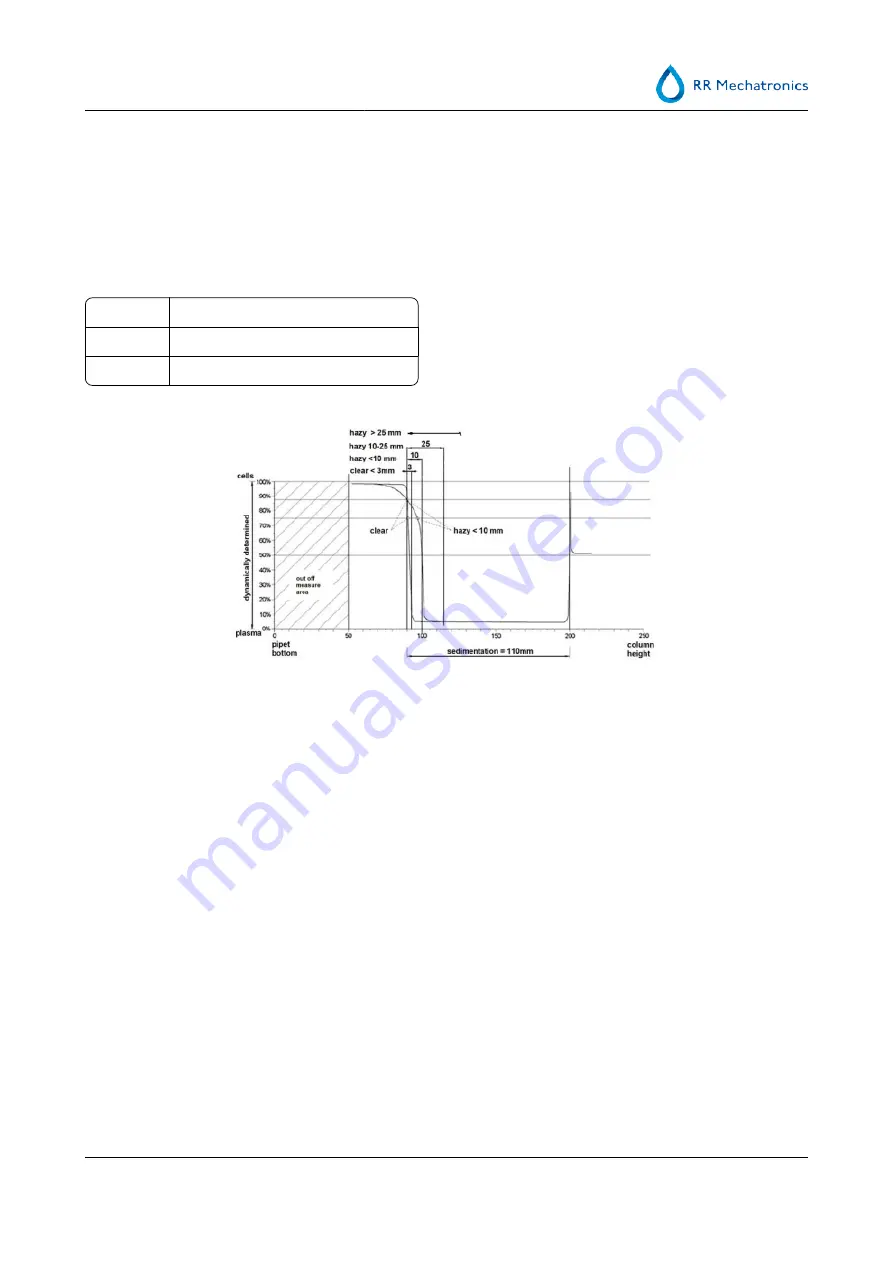
1.8 - Sedimentation measurement principle
The automatic reading of the Westergren sedimentation pipettes is performed by moving an optical sensor
along the pipettes. While the sensor is moving, it is taking a reading every 0.25 mm. The sensor is reading
the absorption of infrared light through the Westergren pipette filled with blood. From these readings, values
at a number of absorption levels are determined. All absorption figures are relative to the darkest and
lightest reading (darkest = 100 % and the lightest = 0 % absorption respectively).
By definition the levels are:
87.5%
Cells/ plasma separation
75.0%
Hazy detection
50.0%
Meniscus detection
Graphic showing typical absorption values of a sample
1.9 - Dilution principle
The principle of adding Diluent to a flow of whole blood is unique. The Interrliner has the capability of
monitoring the air displacement during the aspiration cycle. This is called on-line dilution. The CPU receives
data from the airflow sensor and calculates the syringe speed. Diluter accuracy is ± 3%.
The citrate dilution (4:1) takes place to reduce the influence of HCt (Hematocrit) on the sedimentation
process. Dilution brings the Hct level from 0.45 (considered as a normal level) to 0.36. The ICSH (1993)
recommended the use of EDTA samples with a Hct of 0.35 or less. Dilution errors up to 25% results in a 5%
variation in Hct of the prepared sample. This is within the natural variation in Hct between individual humans
and will not have significant influence on the accuracy of the ESR measurement.
Introduction
MRN-164_2-EN Version 2.02 Interrliner
13














































